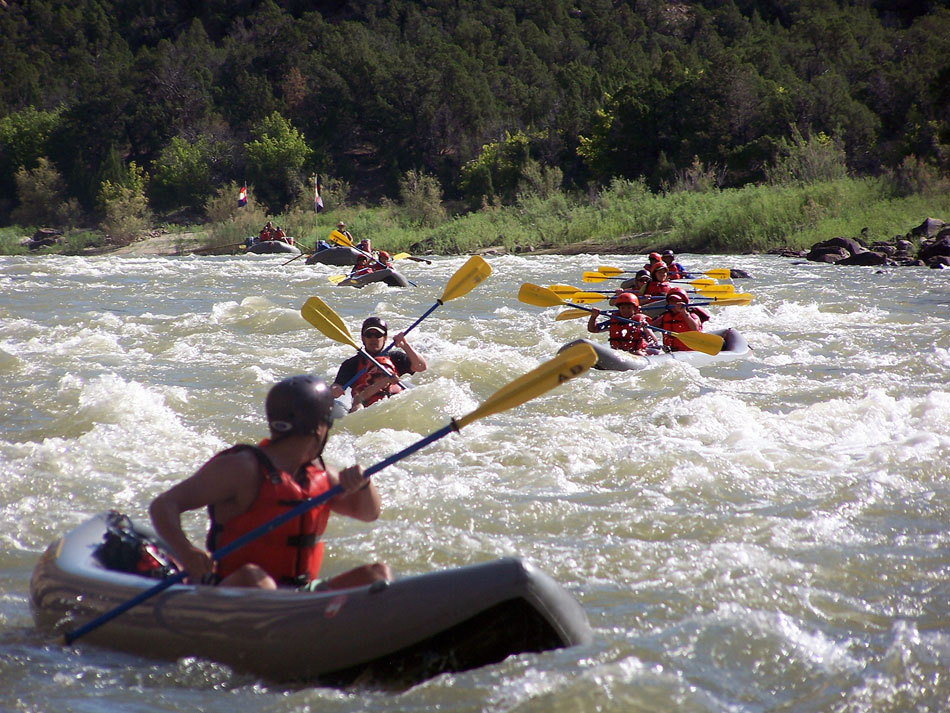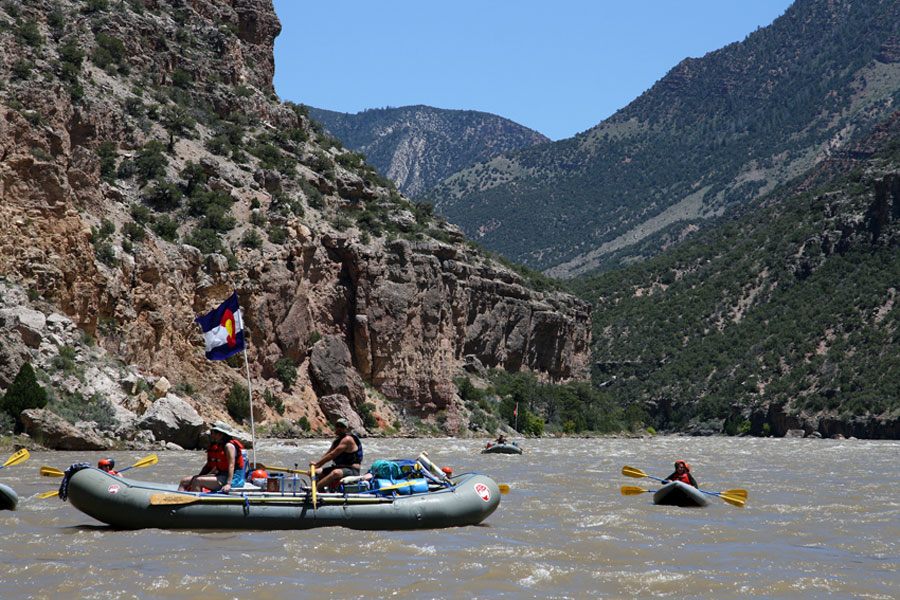Dinosaur National Monument
On the Green River, the Dinosaur National Monument is largely known for its unique fossil exhibit and was designated a National Monument in 1915 after being discovered by paleontologist, Earl Douglass.
The quarry was the source of the largest single collection of bones from the "Jurassic" period ever found. Douglass knew that similar rocks in Colorado and Wyoming had yielded great dinosaur finds, and he began to search this area in 1908.

-
Rather than excavate the entire site, the National Park Service built the quarry around the site. In the 1950s, they reopened Douglass Quarry, not to remove all the fossils, but to develop them into a unique exhibit. It offers visitors a very unique opportunity to see over 1,400 fossil bones that have been left in place as nature deposited them 150 million years ago.
As the dinosaurs died, river flood waters washed a great number of remains onto a sandbar, preserving the bones in the sand. As the sea washed in an out after the Jurassic period thousands more meters of sediment covered the bones. Dissolved silica leaching through the strata turned the river bed into hard sandstone mineralizing the bones buried within.
As the Rocky Mountains rose, rock layers were pushed together exposing the strata to the elements. Poised at the top of a jagged ridge, snow, rain, wind wore away the layers of the buried riverbed eventually revealing the fossil treasure.
The canyons of the Green River and Yampa River were added to the original Park in 1938. Relatively unexplored, the river corridor holds many secrets. Not far from that ridge, the prehistoric Fremont people carved elaborate pictographs into the cliffs about 1000 A.D.

-
Within this arid setting, the rivers and their canyons are linear oases, in which the green of cottonwoods and box elders grow creating oases type settings. Boaters drifting along a quiet stretch of water may be startled by the sound of a flock of Canada geese taking wing, or by the sight of a bighorn sheep high on a cliff. Around the next bend might be an adventure of another kind, as the river plunges madly into a foaming whitewater rapid!
View more Colorado River rafting and inflatable kayaking photos in our Photo Gallery
If you have some great photos from one of our trips and would like to share them, please tag us #adventureboundusa . Or say hello @adventureboundusa